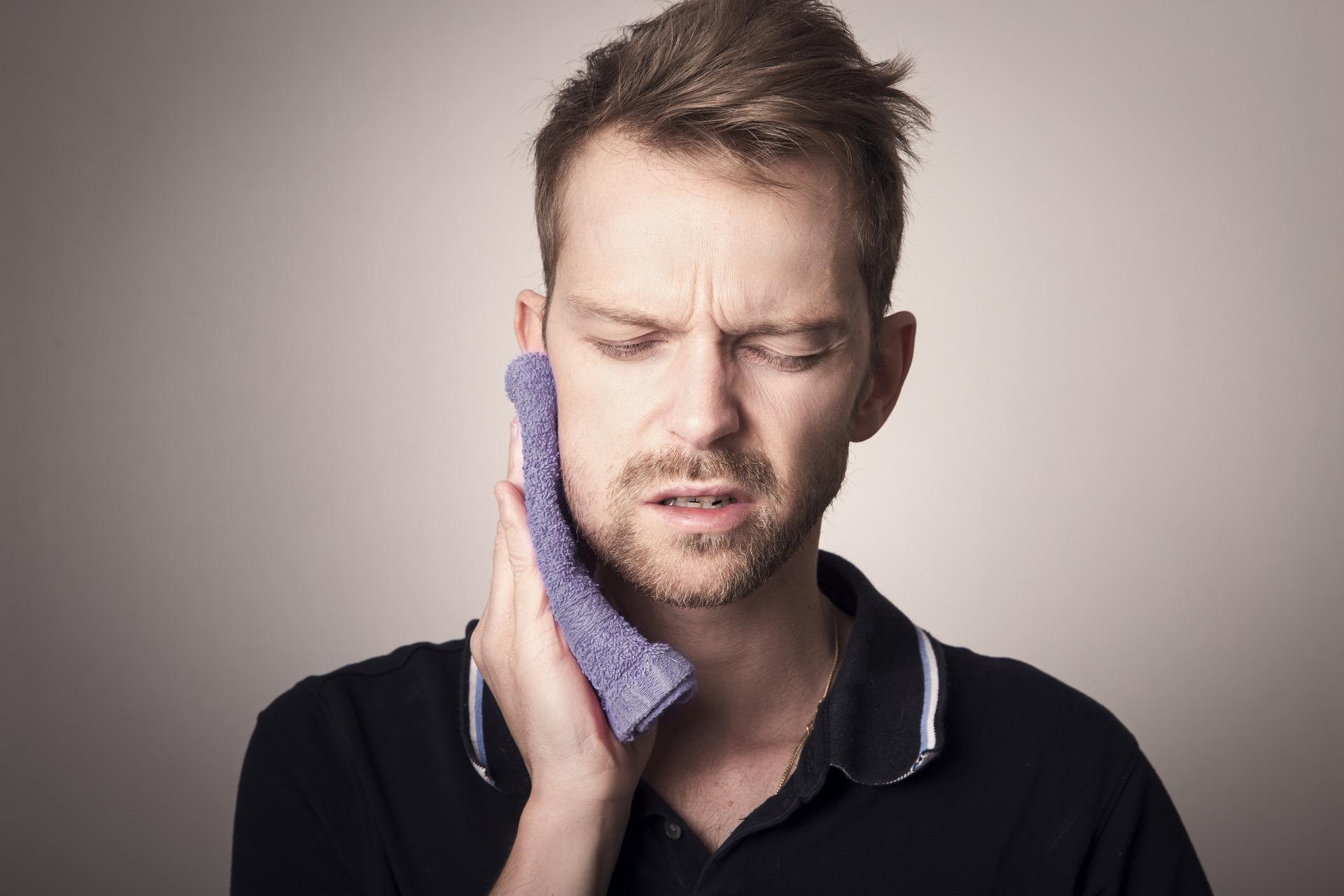6 Reasons Why Toothpaste Can be Harmful to You.

Brushing our teeth with toothpaste is a crucial part of our daily hygiene routines, and we should do so both first thing in the morning and before we go to bed at night. Research has established a connection between gum disease and the likelihood of developing heart problems. Not only does this practice guard against bad breath, cavities, and discolored teeth, but it also protects our heart’s health.
There is no room for debate on the fact that we should all be brushing our teeth on a regular basis. When you look at some of the typical components that are present in conventional toothpaste, though, it may cause you to reconsider what you might be placing in your mouth.
Artificial sweeteners and toxic chemicals are only two examples of many of these elements that are harmful to our health and wellbeing and should be avoided at all costs.
Always remember that information is power. When we have more information about the potentially dangerous toxins that may be hiding in our toothpaste, we will be able to take measures to eliminate the use of risky compounds in our everyday routines.
This article will examine six of the most hazardous ingredients that are commonly found in conventional kinds of toothpaste and will highlight the reasons why we should try to stay away from them. In addition to that, we are going to discuss a few of the effective and secure options that you may use to maintain the health of your teeth and keep them clean.
Harmful Ingredients in Toothpaste
It’s unfortunate but true that the toothpaste we use every day may include a number of chemicals that could be damaging to our health. Although exposure to these chemicals in low concentrations is unlikely to result in any immediate health problems, continued usage of these substances puts us in contact with them on a continuous basis, which raises the probability that we will experience negative consequences.
Fluoride
The majority of commercially available brands of toothpaste contain fluoride. Therefore, why?
Dentists in the early 1900s observed that people who lived in regions where the water naturally contained a higher concentration of fluoride had lower rates of tooth decay. Soon after, a connection between fluoride and good oral hygiene was discovered, and the addition of fluoride to toothpaste became the industry standard.
It would seem that having fewer cavities would be a positive thing, wouldn’t it? Sadly, it is not where the tale comes to a close. It has been established that fluoride, which is a neurotoxin, can cause thyroid problems in both adults and children.
According to the findings of one study carried out in Canada, persons who had greater fluoride levels in their urine had an increased likelihood of having an underactive thyroid. Another study that looked at the effects of fluoride on the thyroid function of Chinese schoolchildren found that even low to moderate fluoride exposure influenced their thyroid function, which in turn affected the children’s IQ scores.
If the dangers to our health weren’t enough, fluoride can also cause damage to our teeth in addition to the damage it causes to theirs. When used in excessive amounts, it can cause brown patches and discoloration of the skin. This condition is referred to as fluorosis.
Because they aren’t as good at remembering to spit the toothpaste out instead of ingesting it, younger children are particularly at risk because of this.
Propylene Glycol, Why is it in Toothpaste?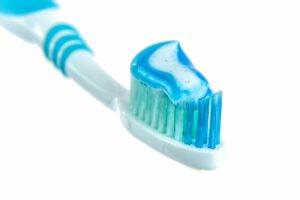
The American Contact Dermatitis Society named propylene glycol the 2018 Allergen of the Year. Propylene glycol is a common component found in antifreeze and paint, and it was given this honor. Therefore, it is understandable if you are perplexed as to why it is there in your toothpaste in the first place.
It would appear that the issue is one of texture. The addition of propylene glycol makes the toothpaste more manageable, and it also prevents it from drying out.
Propylene glycol, despite its silky texture, can be poisonous in excessive amounts and has the potential to cause major health consequences, such as damage to the kidneys and symptoms similar to sepsis.
Even if it does not present in such high proportions in toothpaste and is considered safe by the FDA, the majority of us will think twice before putting this harmful component in our mouths.
Chemical characteristics of Parabens
It’s normal practice to use parabens as a preservative, and you may find them in a wide variety of personal care items, including toothpaste. However, longer shelf life is not worth the risks associated with this category of toxins, which have been garnering attention for years because of the influence that they have on our hormones. This issue has been attracting more and more attention as time has gone on.
Parabens are endocrine disruptors that, according to the Environmental Working Group, have the potential to act like estrogen in human bodies. They have been associated with a wide variety of negative health outcomes, ranging from decreased fertility to an elevated risk of breast cancer.
Sweeteners In Our Toothpaste
The flavors of the active chemicals that are used in traditional toothpaste are not exactly appealing. Because of this, the majority of producers add artificial sweeteners to their products in order to make them taste better.
Saccharin and aspartame are two common types of sweeteners that can be found in toothpaste.
Saccharin is one of the most often used artificial sweeteners, and it is generally recognized as being harmless, particularly when contrasted with sugar in its natural form.
However, according to a study that was conducted in 2019 on rats to investigate the long-term consequences of this sweetener, it was found to be connected with an increased risk of diabetes, obesity, as well as decreased kidney and liver function.
It is true that people are not rats. However, the research makes us wonder how safe saccharin is, considering how frequently we put it in our mouths and chew it.
There haven’t been many tests done on humans to determine whether or not aspartame is safe. Nevertheless, a report that summarized the evidence and was published in 2017 advocated for a closer look at this artificial sweetener.
Aspartame may cause an increase in oxidative stress, as well as damage to our cell membranes, which ultimately results in inflammation, according to the findings of the researchers after they integrated the scant evidence from human studies with the findings from studies conducted on animals.
Colorings & Dyes In Striped Toothpaste
It is not normal for toothpaste to have stripes of colors like those you see in your tube. Indeed, the majority of commercially available toothpaste contains a variety of synthetic colors, which are responsible for their vivid appearance.
Although the FDA has given its blessing for the use of certain dyes and colors in food, this is not necessarily as reassuring as it could be.
According to research that was recently published by the American Society for Experimental NeuroTherapeutics, there is a body of data that relates hyperactivity and behavioral difficulties in children to the consumption of artificial food colorings.
The Center for Science in the Public Interest has compiled a large number of scientific research that have been conducted on the subject of the safety of food dyes and colorings, including those that are utilized in the production of toothpaste. Their investigation reveals possible connections not only to hyperactivity but even to allergies and cancer as well.
The majority of artificial food colorings are generated from petrochemicals as if the health concerns associated with these colors weren’t enough to turn us off of them. Because of this, they are harmful to the environment and pose a possible threat to human health.
Triclosan Is Present In Conventional Toothpaste Brands
Triclosan is a chemical that can be seen in antibacterial soaps, cosmetics, and toothpaste. It is also found in body washes.
According to the findings of a study that was done, the Food and Drug Administration (FDA) revealed that certain thyroid hormones had decreased (4). Regarding the impact that the study may have on humans, there are, however, no substantial data available as of yet.
Your metabolism can be kept under control and in check with the assistance of thyroid hormones. A slowing of the metabolic rate may be the result of a decrease in such hormones.
In addition, several researchers are looking into the connection between triclosan use and antibiotic resistance as well as the development of skin cancer. It is troubling that this research has not yet been finished in order to arrive at a conclusion.
Because of the growing body of doubt about triclosan, it is probably advisable to steer clear of using this chemical in your toothpaste.
Is There a Benefit to Using Toothpaste Without Fluoride?
Now that we’ve examined some of the potentially hazardous compounds that are present in a lot of conventional toothpaste, we can probably all come to the conclusion that these aren’t components that we want anywhere near our mouths. But what are some of the other options?
We have included information about organic, natural, and fluoride-free toothpaste that can keep your teeth and those of your family cavity-free and clean throughout the day. These pastes and powders are certain to be soothing, invigorating, and well-liked by everyone, no matter how finicky your infant or how sensitive your gums may be.
B Corp Certification
B Corp Certification is a designation that a business is meeting high standards of verified performance, accountability, and transparency on factors from employee benefits and charitable giving to supply chain practices and input materials.
1. Wildist
Ethically sourced, all natural, cruelty-free, fluoride-free, vegan, created in the USA, and 100 percent recyclable packaging are just some of the key features of this product.
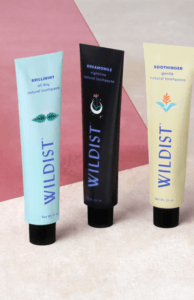
Xylitol | Primary Component.
The toothpaste made by Wildist is a step above other products on the market. The calming “Soothinger” has ginger oil, ginseng root, and turmeric extract, and the calming “Dreamomile” boasts activated charcoal, spearmint oil, and chamomile extract. Both formulas are designed to be taken before bedtime. (Even the flavor that is considered to be more traditional, “Brillimint,” contains extracts of white tea and ginseng root.) All of the components are obtained in a responsible manner and are entirely natural. Additionally, the aluminum tubes are free of BPA and are recyclable in their whole. In addition to this, each and every component of the packaging material can be reused.
2. Dr. Bronner’s
Key Features | Certified B Corp, fluoride-free, all natural, vegan, cruelty-free, fluoride-free, organic, recyclable packaging, and gives back to the community
Main Ingredient | Baking soda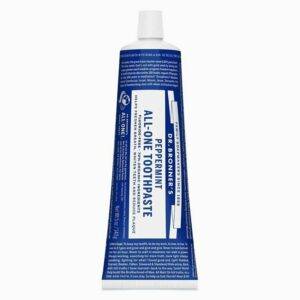
Dr. Bronner’s toothpaste, which is manufactured with over 70 percent certified organic components, will help you get rid of plaque and whiten your teeth at the same time! This straightforward formulation is available in four distinct flavors: peppermint, spearmint, anise, and cinnamon. It does not contain fluoride, coloring, or foaming ingredients. Users are ecstatic with the clean sensation that lingers after using Dr. Bronner’s products, and the company uses Fair Trade goods whenever it is possible to do so, including organic coconut oil and coconut flour. This natural and environmentally friendly toothpaste is produced in containers that may be recycled after use.
3. Dr. Brite
Key Features | Certified B Corporation, all-natural, cruelty-free, fluoride-free, created in the USA, vegan, and generously gives back to the community
Xylitol |Primary Component.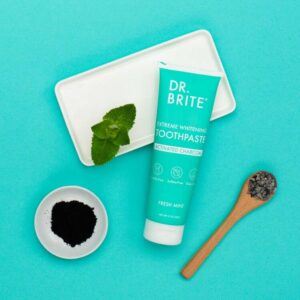
Dr. Brite is a recognized B Corporation that was founded by two practicing physicians. This company is run by women, and their products are cruelty-free, effective, and safe for the whole family. They don’t test on animals and they don’t use any harmful ingredients or wasteful packaging. There are eight different types of toothpaste available here, ranging from one that provides extreme whitening (which has almost 200 favorable reviews!) to one that is kid-friendly and prevents plaque buildup. A combination of aloe vera leaf juice, natural oils, and xylitol will provide you with effective results in a short amount of time.
The following are examples of some of the potent active compounds that are utilized in fluoride-free kinds of toothpaste:
Hydroxyapatite
Hydroxyapatite is a mineral that occurs naturally and plays an important role in the structure of our bones and teeth. Its use in toothpaste has the dual effect of fortifying and repairing our tooth enamel.
Hydroxyapatite toothpaste was shown to be just as good in repairing and preventing cavities as traditional fluoride toothpaste, according to a study that was published in Nature in 2019 that compared the two types of toothpaste.
Green Tea Extract
Green tea extract helps to reduce inflammation and is effective in warding off microorganisms because it is loaded with antioxidants. This is beneficial information for your oral health since it inhibits the growth of bacteria that contributes to gum disease and halitosis (bad breath).
Aloe Vera
It is well known for the therapeutic capabilities that aloe vera possesses. In addition to being a natural antibacterial, it helps to maintain healthy teeth and gums by reducing inflammation and removing germs that might cause infection.
Because of its ability to whiten teeth, aloe vera is one of the most important components of our whitening toothpaste. It should be considered one of the superpowers that aloe vera possesses.
Neem Oil
Neem oil, which is derived from the evergreen Neem tree, has numerous positive effects on human health, one of which is improved oral hygiene. It has natural antibacterial properties and can help eliminate plaque and cavities from teeth. It does this by reducing the amount of dangerous bacteria in the mouth, which in turn lowers the risk of gum disease.
So. Is there any benefit to using a toothpaste without fluoride? Yes! Kinds of toothpaste that are made from natural ingredients that do not include fluoride can help keep teeth clean, avoid bad breath, and combat tooth decay and gum disease. All of this is accomplished without the use of hazardous chemicals or pollutants.
Additionally, the use of these kinds of toothpaste can also aid to remineralize your teeth, which can repair any damage to your teeth and assist in the healing of cavities.
Resources
Till, C., Malin, A. J. Riddell and H. McCague are the authors of the study (2018). Fluoride exposure and thyroid function in individuals living in Canada: The effect of iodine status on the relationship 121(Part 1):667–674 in Environment International. https://doi.org/10.1016/j.envint.2018.09.026
Wang, M., Liu, L., Li, H., Li, Y., Liu, H., Hou, C., Zeng, Q., Li, P., Zhao, Q., Dong, L., Zhou, G., Yu, X., Liu, L., Guan, Q., Zhang, S., & Wang, A. (2020). Thyroid function, intellect, and low to moderate fluoride exposure in Chinese children of school age Environment international, 134, 105229; doi:10.1016/j.envint.2019.105229 for more information.
The authors, S. E. Jacob, A. Scheman, and M. A. McGowan (2018). Propylene Glycol. Contact, atopic, occupational, and drug-induced dermatitis are discussed in Chapter 29 (1), pages 3–5. https://doi.org/10.1097/DER.0000000000000315
Zar, T., Graeber, C., & Perazella, M. A. (2007). Identification, treatment, and prevention of propylene glycol poisoning are all important aspects of this topic. Seminars in Dialysis, Volume 20, Issue 3, Pages 217–219 https://doi.org/10.1111/j.1525-139X.2007.00280.x
What exactly are parabens, and why should we try to avoid using them in cosmetics? https://www.ewg.org/what-are-parabens
Azeez, O. H., Alkass, S. Y., & Persike, D. S. (2019). Rats that were given saccharin for extended periods of time had an increased risk of developing obesity, diabetes, hepatic dysfunction, and renal impairment. Medicina (Kaunas, Lithuania), 55(10), 681. https://doi.org/10.3390/medicina55100681
The authors Choudhary, A. K., and Pretorius, E. (2017). Concerns about the safety of aspartame are raised again. 718–730 in Nutrition reviews, volume 75, issue 9. https://doi.org/10.1093/nutrit/nux035
Arnold, L. E., N. Lofthouse, and E. Hurt were the authors of the study (2012). Conclusions that will make you want to dye for them: artificial food colors and attention-deficit/hyperactivity disorders. 599–609 are the pages that can be found in the third issue of Neurotherapeutics, which is published by the American Society for Experimental NeuroTherapeutics. https://doi.org/10.1007/s13311-012-0133-x
A Spectrum of Dangers Presented by Food Dyes https://cspinet.org/resource/food-dyes-rainbow-risks
Amaechi, B.T., AbdulAzees, P.A., Alshareif, D.O. et al. A study comparing the effectiveness of fluoride toothpaste with a hydroxyapatite toothpaste in preventing and remineralizing dental cavities in children was conducted. BDJ Open 5, 18 (2019). https://doi.org/10.1038/s41405-019-0026-8
Fda.gov (2018). Cosmetics that include parabens. [online] Available at: https://www.fda.gov/cosmetics/productsingredients/ingredients/ucm128042.htm [Available on the 28th of August, 2018].
Fluoridealert.org (2018). Endocrine and Reproductive Systems | Fluoride Action Network [online] Available at: https://fluoridealert.org/issues/health/endocrine/ [Available on the 27th of August, 2018].
Lehman-McKeeman LD, e. (2018). In mice, diethanolamine administration leads to hepatic choline insufficiency. – PubMed – NCBI. [online] Ncbi.nlm.nih.gov. Available at: https://www.ncbi.nlm.nih.gov/pubmed/11961214 [Available on the 28th of August, 2018].
The authors of the study are as follows: Palmnas, M.; Cowan, T.; Bomhof, M.; Su, J.; Reimer, R.; and Vogel, H. (2018). In the diet-induced obese rat, consumption of low doses of aspartame has a variety of effects on the metabolic interactions between the gut microbiota and the host. [online] PubLMed.gov. Available at: https://www.ncbi.nlm.nih.gov/pubmed/25313461 [Available on the 28th of August, 2018].
PubLMed.gov (2017). Through 3,5-substitution, the estrogen receptor-binding properties and antimicrobial properties of parabens can be dissociated from one another. [online] Available at: https://www.ncbi.nlm.nih.gov/pubmed/29348811 [Available on the 28th of August, 2018].
The link between periodontal disease and cardiovascular illness can be found at the following website: www.health.harvard.edu/diseases-and-conditions/gum-disease-and-the-connection-to-heart-disease.

